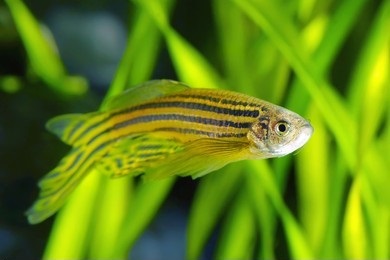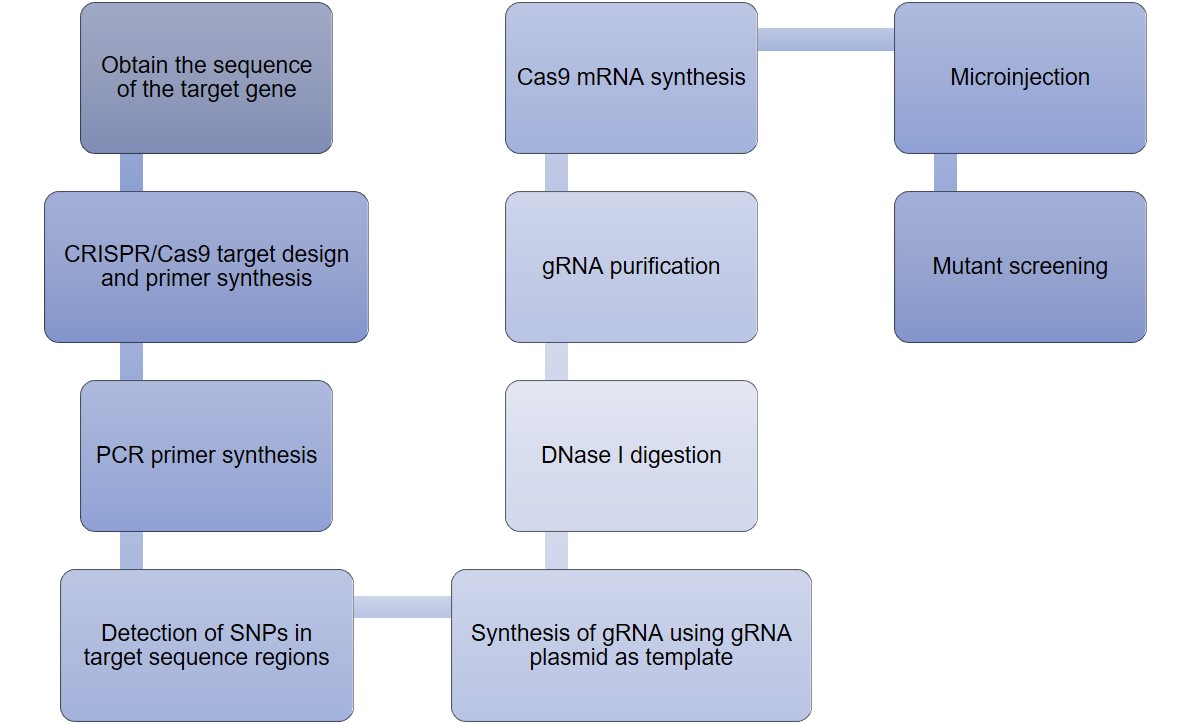Danio rerio, also lnown as zebrafish, it was first found in the rivers of India, Pakistan, and Bangladesh, and was named after many dark blue longitudinal stripes that resemble zebras. The Danio rerio is fertilized in vitro, and the sexual maturation time is 3 months. A pair of adult fish can give birth to 300-600 embryos each time, and the development speed of embryos is so fast that the whole process of early development can be observed in a short time, so it is very suitable for studying the characteristics of each developmental stage.
 Figure 1. Image of Danio rerio.
Figure 1. Image of Danio rerio.
The embryos of Danio rerio are transparent and easy to observe and manipulate directly under the microscope. In contrast to other vertebrates, disease phenotypes in Danio rerio can often be determined simply by observing the light transparency of the embryo through a light microscope, or further by driving the expression of fluorescent proteins in specific tissues and organs, thus greatly reducing the difficulty of phenotypic screening.
In addition, the Danio rerio genome contains over 26,000 protein-encoding genes, which is the largest vertebrate genome sequence that has been sequenced to date. The organogenesis process of Danio rerio is very similar to that of humans, and the high homology between Danio rerio and human genes of 87% makes it possible to construct relevant disease models using gene-editing techniques, which makes Danio rerio a model animal for gene editing research.
Lifeasible provides one-stop gene-editing techniques to modify certain specific genes in Danio rerio to obtain the corresponding mutants in Danio rerio. There are usually 2 approaches, forward genetics strategy, and reverse genetics strategy.
We use methods including X-Ray mutagenesis, transposon mutagenesis, and ENU mutagenesis to first obtain Danio rerio mutants with specific abnormal phenotypes by saturated gene mutagenesis screening, and then identify phenotype-associated mutant genes by chromosomal localization and molecular cloning techniques.
We use Morpholino interference technology and three major nuclease editing systems such as CRISPR to infer the function of a Danio rerio gene of interest by mutagenizing or inactivating the gene and then detecting the phenotypic abnormality caused by the deletion or inactivation of the gene.
CRISPR/Cas9 technology services

Lifeasible can use CRISPR/Cas9 technology to perform gene knockout in Danio rerio to obtain mutationally heritable Danio rerio. Since about 20% of Danio rerio genes have functional duplication, we can use CRISPR/Cas9 to target multiple genes simultaneously to obtain heritable mutants.
Compared with ZFNs and TALENs, CRISPR/Cas9 gene-editing technology mainly relies on sgRNA for target sequence recognition, avoiding the time-consuming and labor-intensive protein construction process as in the case of ZFNs and TALENs. In addition, our CRISPR/Cas9 technology is low-cost, simple, fast, efficient, and not species-restricted. For more information or any inquiry requirements, please contact Lifeasible.
Reference